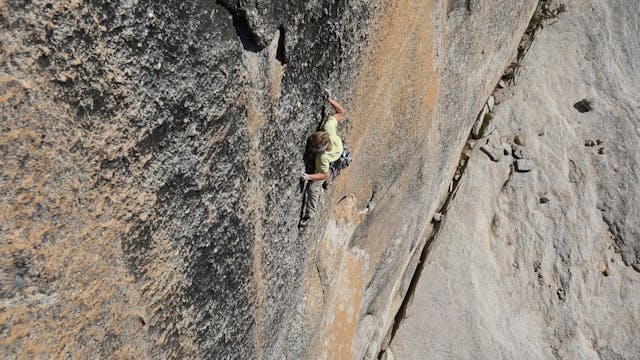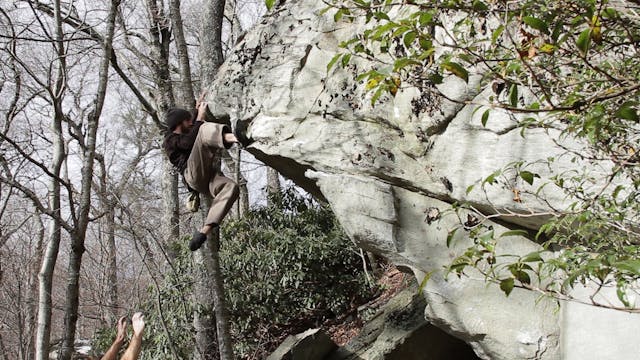Climbing Movement: 13. Breathing
Climbing Movement
•
1m 31s
Being aware of your breath is critical for climbers. We don’t mean fresh breath; we mean proper breathing.
Calm, regular breathing is key to helping muscles remain oxygenated and ready for use.
A great way to be aware of your breath is to exhale out the mouth, in an audible manner. If you are unable to hear your breath, you are probably breathing incorrectly and in turn depriving your muscles of oxygen.
Keep a natural and calm rhythm in your breathing and movements. It is important to never hold your breath, or hyperventilate.
That stated a strong exhale on a hard move helps tense your core muscles, keeping you strong throughout the body and helping you maintain body tension.
Your final aim should be a calm mind, and focused regular breathing, which keeps your heart rate down and your body on the wall.
Once a climber moves past the early periods of learning key movements, often all they need to focus on is breathing and footwork.
Breathing is an important piece of the larger climbing technique. Try to take in as much fresh air as possible. In the long run it only helps your climbing!
We hope you found this video helpful. Feel free to comment below with questions or thoughts!
Please remember, climbing is inherently dangerous. Climb at your own risk.
Up Next in Climbing Movement
-
Climbing Movement: 14. Posturing
“Posture” or the act of “posturing” is the term we use for the most basic and efficient body position you can place yourself in for climbing.
Keep in mind that you will never be at rest when climbing, so it is ideal to only use the energy necessary for that particular climbing move.
When p...
-
Climbing Movement: 15. Body Tension
Maintaining body tension helps a climber minimize unnecessary movement or swinging.
A loss in body tension between hand and footholds often results in undesired swings away from the wall. This greatly increases your chances of falling.
Maintaining body tension between hand and footholds g...
-
Climbing Movement: 16. Opposition vs....
Climbers use the forces of opposition and compression to their advantage. These forces turn seemingly impossible holds or positions into usable, climbable surfaces.
Compression:
Examples of using compression forces to your advantage include the action of climbing an “arete” (i.e. corner),...


